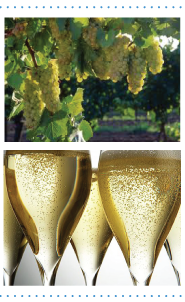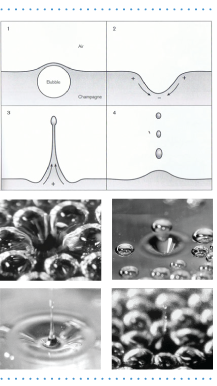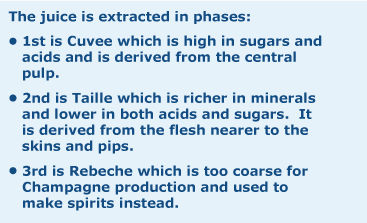|

Content contributed by Kimberly Bricker, Imperial Beverage

This quote is often attributed to Dom Perignon, a Cistercian monk, upon drinking champagne for the first time. This is a lovely quote and story indeed, even if a bit romanticized. Dom Perignon was constantly annoyed with the bubbles (refermentation) in Champagne and tried desperately to keep the bubbles out! He finally succumbed to the inevitable sparkle and remains an iconic founding father of  Champagne. Not only did he reluctantly witness the creation of Champagne- but he invented a coquard press to turn grapes into a clear liquid, studied and understood the importance of blending different grapes and vineyards, utilized strong English glass bottles, and reintroduced the cork. While the first two contributions make Champagne better, it simply could not exist without the last two mechanisms. Champagne. Not only did he reluctantly witness the creation of Champagne- but he invented a coquard press to turn grapes into a clear liquid, studied and understood the importance of blending different grapes and vineyards, utilized strong English glass bottles, and reintroduced the cork. While the first two contributions make Champagne better, it simply could not exist without the last two mechanisms.
Wines from the cold climate region of Champagne always had a slight sparkle to them. Waiting for the grapes to ripen on the vine until late fall, they would begin to ferment only to be halted by winter’s cold temperatures. The wines were contained, and once they warmed up in spring, fermentation would resume. The carbon gas produced by the fermentation process had nowhere to go so it integrated into the wine causing a bubbly carbonation.
So let’s make some Champagne!
We have to start with some still wine that is preferably high in acid and low in sugars. With two fermentations required, the first fermentation should result in a low-alcohol wine. A gentle pressing with a horizontal basket or bladder press should be used. In the Champagne region of France the grapes used are Chardonnay, Pinot Noir, and Pinot Meunier.
The juice is extracted in phases:
1st is Cuvee which is high in sugars and acids and is derived from the central pulp.
2nd is Taille which is richer in minerals and lower in both acids and sugars. It is derived from the flesh nearer to the skins and pips. 3rd is Rebeche which is too coarse for Champagne production and used to make spirits instead.
Then the juice is set (Debourbage). The solid particle sink, and are separated from the now clear juice. A warm fermentation begins at 60-70F (10-16C) and lasts for a week to 10 days. Malolactic fermentation can take place too. The resulting base wine should be 10-11% abv and can be chaptalized (sugar added for the purpose of increasing the resulting alcohol level rather than to sweeten a wine) if need be. Next the wine is racked (Soutirage), which removes the solid matter and clarifies the wine again. Now the blending begins. Most Champagnes are a blend of different grapes and vineyards and the results of which are greater than the sum of its parts.
Then it is fined, racked, and Cold Stabilized to clean clarify, and let the tartaric acid precipitate out. Next we make bubbles!
 The prise de mousse, or setting the foam, is the 2nd fermentation that results in a carbonated wine. This is a longer and cooler fermentation (60-63F/10-12C) that lasts for 28-56 days. The process creates 4.9-6 atmospheres of pressure and about 1.5% more alcohol by volume (abv). The base wines are bottled, both yeasts and sugars (liquer de tirage) are added to the bottle, and then it is capped tightly. This, the liquer de tirage, is the fuel for the second fermentation. Bottles are then placed in a pupitre and stored at 12C/54F for the length of the second fermentation. A Pupitre is a framed structure with holes for bottles slanted down at a 45 degree angle and is a home for champagne-to-be bottles during their evolution. The bottles are frequently and abruptly turned- shaking the sediment and moving it slowly down to the neck of the bottle from a horizontal to vertical position. During this 4-8 week process, the wines are aged on the lees (sur lees). (Lees are dead yeast cells which give champagne its bready doughy aromas and flavors.) These days a gyropallatte is used in place of the old fashioned and less efficient pupitre. The prise de mousse, or setting the foam, is the 2nd fermentation that results in a carbonated wine. This is a longer and cooler fermentation (60-63F/10-12C) that lasts for 28-56 days. The process creates 4.9-6 atmospheres of pressure and about 1.5% more alcohol by volume (abv). The base wines are bottled, both yeasts and sugars (liquer de tirage) are added to the bottle, and then it is capped tightly. This, the liquer de tirage, is the fuel for the second fermentation. Bottles are then placed in a pupitre and stored at 12C/54F for the length of the second fermentation. A Pupitre is a framed structure with holes for bottles slanted down at a 45 degree angle and is a home for champagne-to-be bottles during their evolution. The bottles are frequently and abruptly turned- shaking the sediment and moving it slowly down to the neck of the bottle from a horizontal to vertical position. During this 4-8 week process, the wines are aged on the lees (sur lees). (Lees are dead yeast cells which give champagne its bready doughy aromas and flavors.) These days a gyropallatte is used in place of the old fashioned and less efficient pupitre.


|
